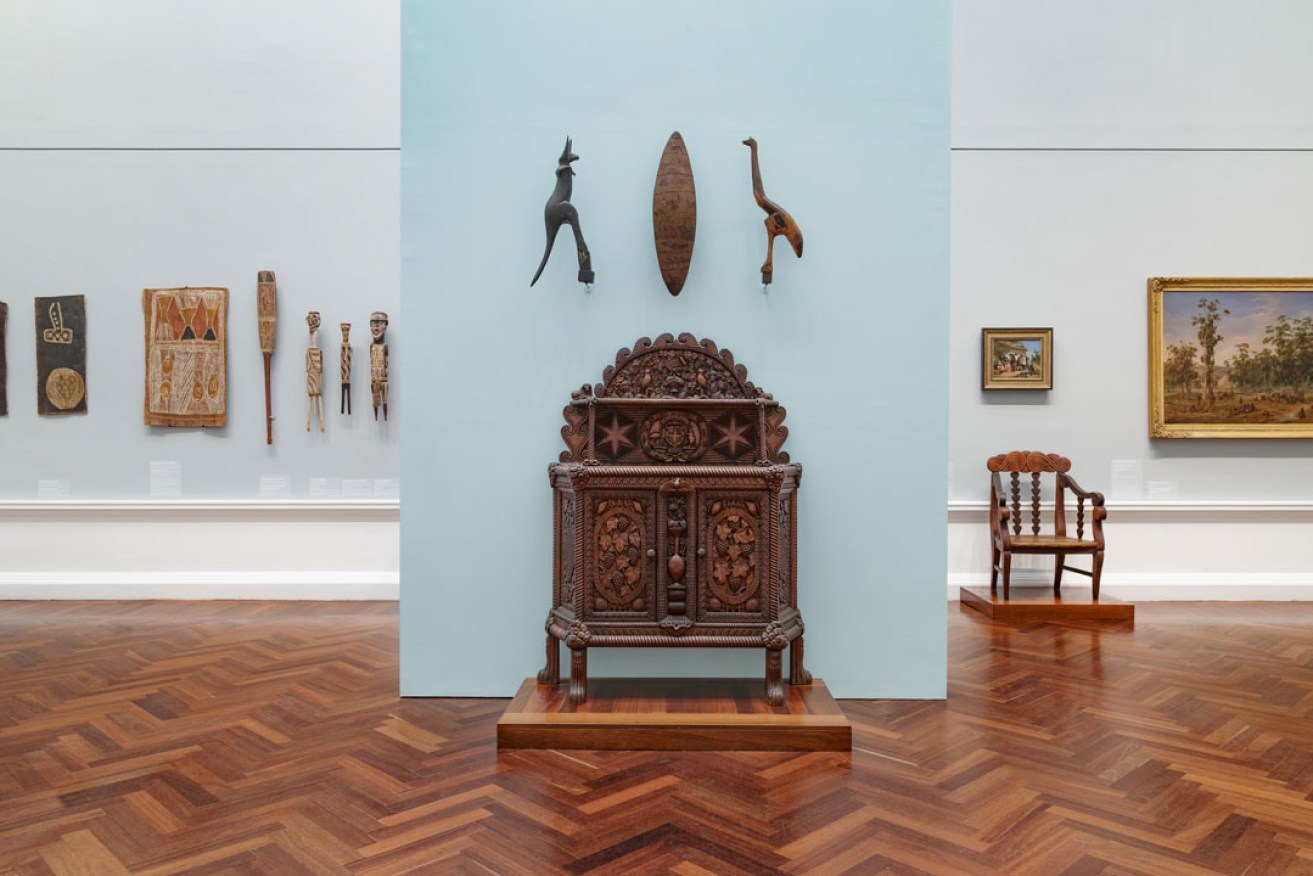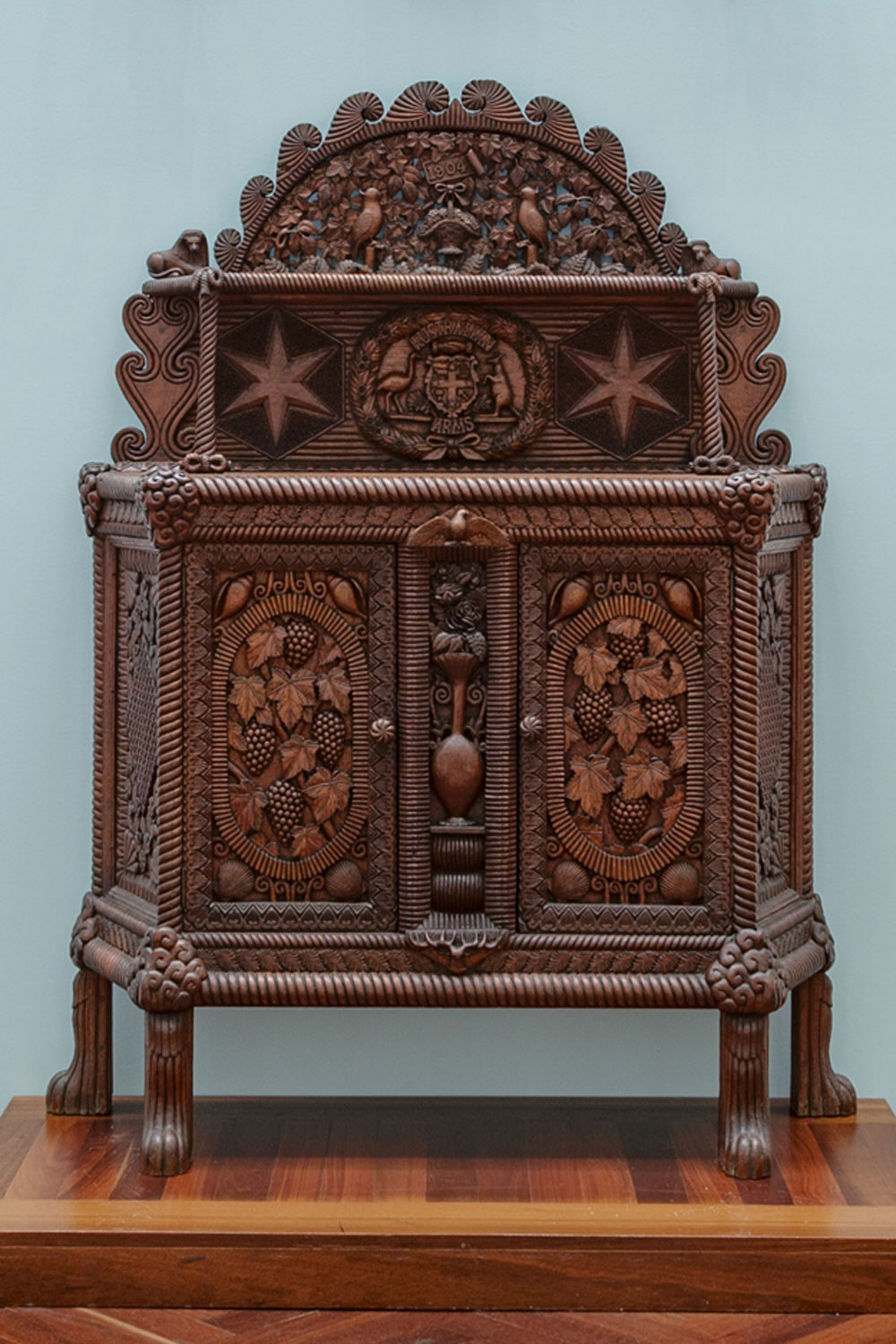Off the Wall: Island life inspired extraordinary wood carver
An elaborate chiffonier made from driftwood and wooden pegs more than 100 years ago by a female wood carver living on South Australia’s Wedge Island is now turning heads at the Art Gallery of SA.

Maud Baillie's Chiffonier in the Elder Wing of the Art Gallery of SA. Photo: Saul Steed
Currently on display at the Art Gallery of South Australia are two recent acquisitions by South Australian wood carver Maud Baillie (née Golley).
Born in 1884 and raised on remote Wedge Island, off the coast of Port Lincoln, Baillie was self-taught and worked in extremely difficult conditions. Despite having no formal training, she designed her furniture, constructed it using wooden pegs instead of nails and screws, and carved extremely detailed and elaborate designs with basic tools.
Baillie used blackwood and other timbers, including wood that washed ashore from shipwrecks.
Her family were largely self-sufficient and almost the only inhabitants of Wedge Island. Baillie took as her most common motifs things found on the island – grapevines, rope, flowers and seashells.

Maud Baillie’s Chiffonier, 1904, Wedge Island, blackwood, Baltic pine, Manchurian oak. Gift of Helen Bowden, 2019.
In 1904, the Governor of South Australia, Sir George Ruthven Le Hunte, visited Wedge Island and saw Baillie’s hand-carved furniture, including Chiffonier, made when she was just 20 years old and carved primarily with a pocketknife.
Highly elaborate, the work includes high-relief carved-rope edging, shell borders, door panels depicting vines and grapes, native birds, decorative bows, stars, and – reflecting the vogue of the time – a coat of arms (a nod to recent federation). Two small seated lions, one on each side of the chiffonier, provide an incongruous and intriguing detail.
The governor was so impressed by Baillie’s skill that he sent her a set of carving tools “in order that she might work with greater ease”. Her family claimed that she preferred working with her pocketknife and soon abandoned the gifted tools.
Woodcarving was a popular pursuit with women in the early years of the 20th century and was particularly popular in South Australia, with woodcarving classes at the Adelaide School of Art especially fashionable.
Baillie exhibited two pieces of furniture in the ground-breaking 1907 Australian Exhibition of Women’s Work held in Melbourne. She also exhibited in the Adelaide iteration of the exhibition, where she was awarded a special prize.
Her family moved to the mainland in 1911, living at North Shields, and in 1914 she undertook her only commission: a large chair for local priest Father Patrick Kelly.
Baillie married in 1922 and, while she never pursued a professional career as a wood carver, she continued to make work for personal use. She also painted and was a skilled seamstress, making clothes for herself and her family.
The AGSA’s recent acquisitions of work by Baillie, generously funded by Helen Bowden, also include a cabinet with glass doors, a display cabinet with drop-down bureau drawer, a carved frame containing a photographic portrait of Baillie, and a painting by the artist of her home on Wedge Island.
Leanne Santoro is curator of Decorative Arts and Design at the Art Gallery of South Australia. Off the Wall is a regular InDaily series highlighting gallery treasures.




